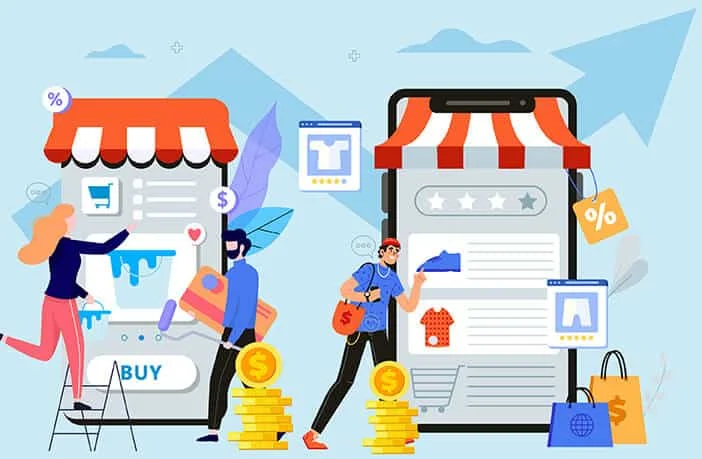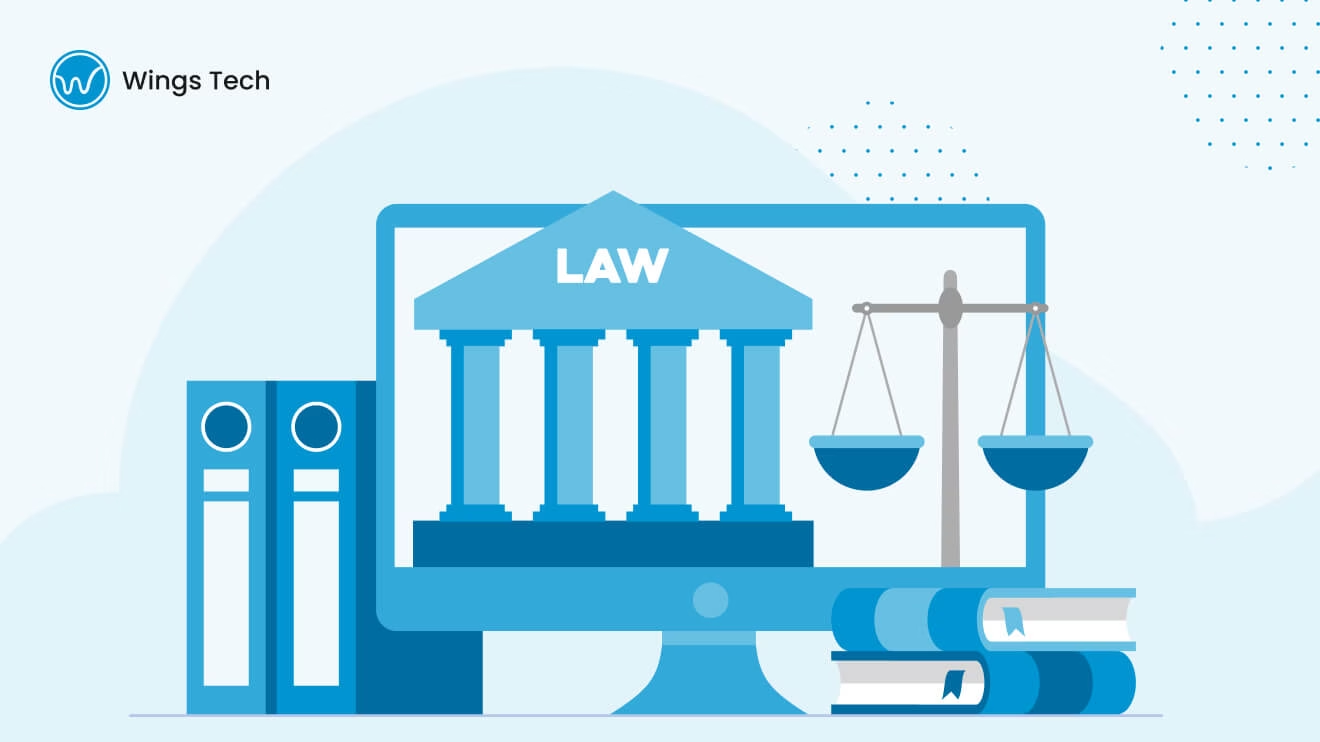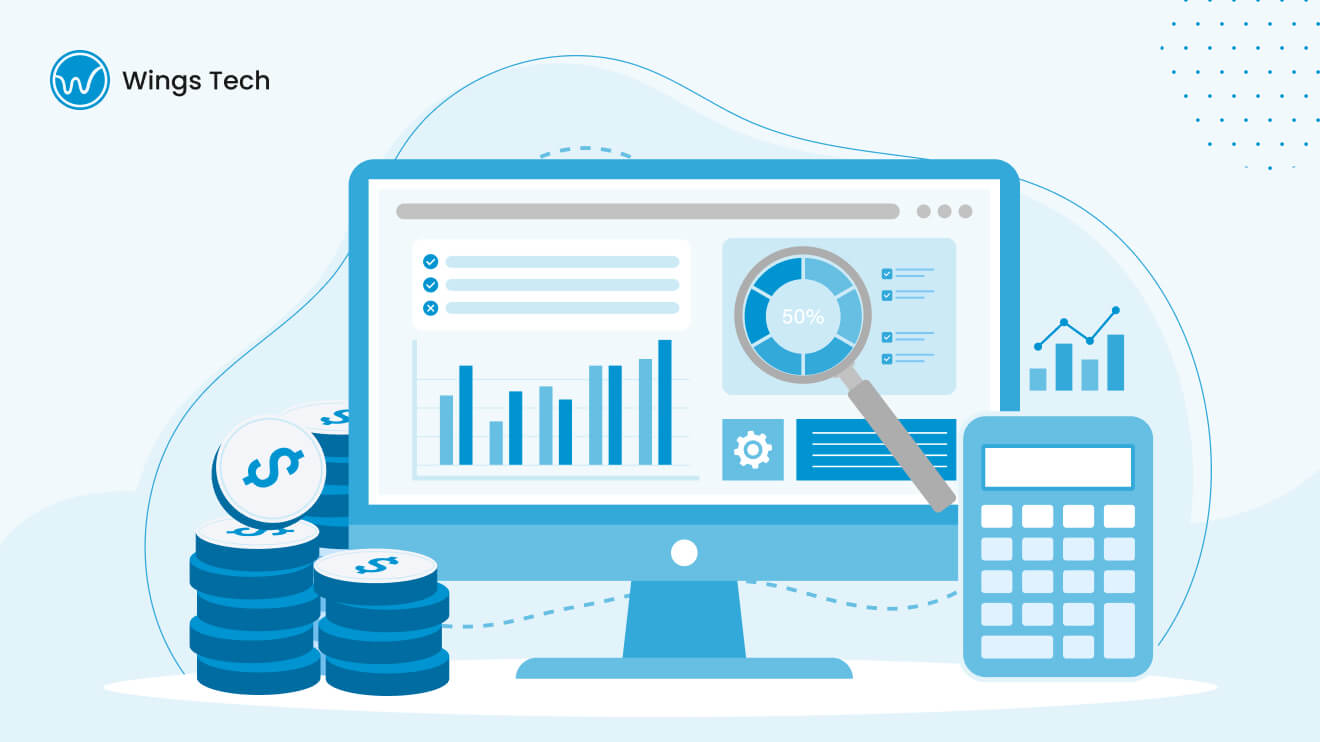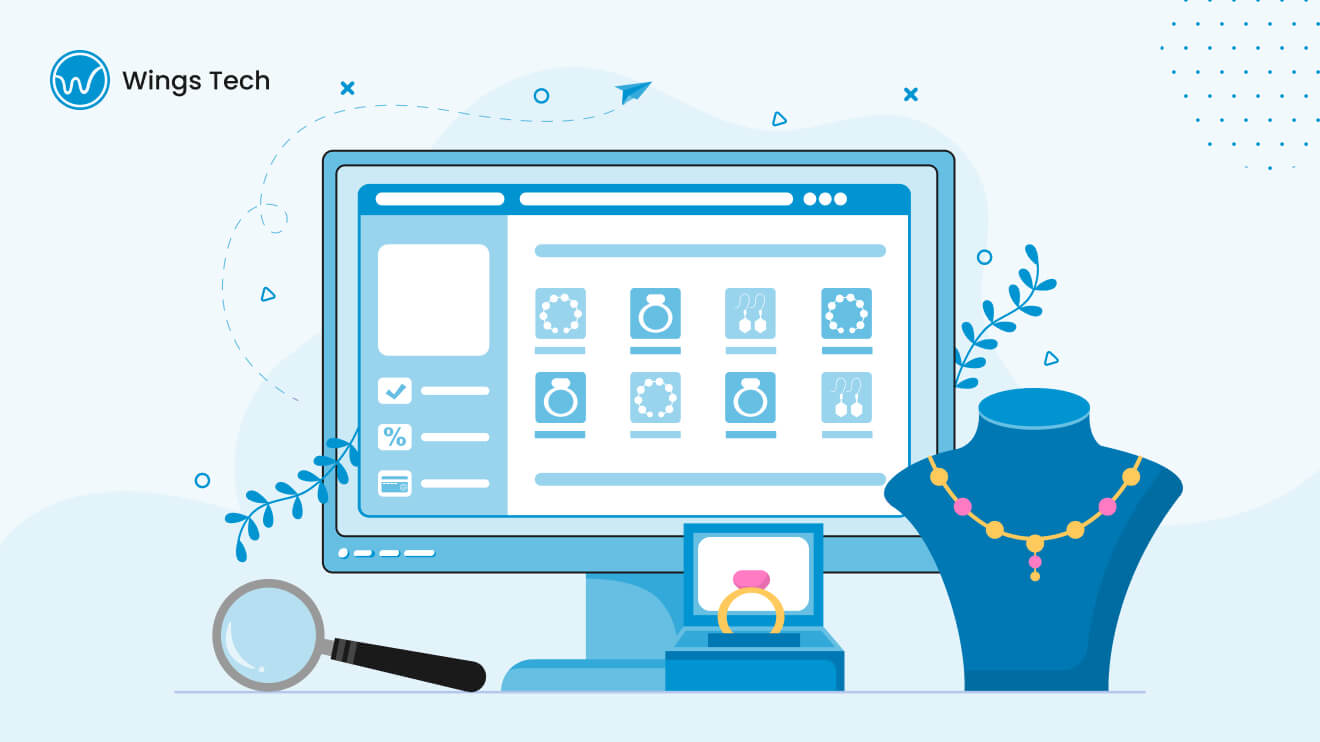Table of Contents
The Ecommerce business statistics may sound overwhelming, but you can’t ignore them. In 2023, there were over 27 million ecommerce websites globally. As of Q2 2024, that number has already crossed 30.7 million. With this rapid growth, many entrepreneurs are now exploring how to start ecommerce business and tap into this booming market.
Global eCommerce sales are expected to reach $6.33 trillion in 2024, an 8.76 percent increase from 2023. Estimates suggest that sales will eventually exceed $8 trillion by 2027.
So, if you want to start an ecommerce store, this guide is just for you. Go through it, take action, prepare a plan, and start working on it.
With the help of this guide, you will understand the fundamentals of an ecommerce business and its various types. You will also learn the steps and tips for starting and running a successful online selling business. Further, we have discussed the benefits and covered some FAQs related to the ecommerce business.
What is an Ecommerce Business?
The definition of an ecommerce business is simple. It is the business of selling and purchasing products or services online via websites, apps, social media, or online marketplaces. This model allows ordering from the comfort of your home via the Internet. Thus it’s becoming so popular that around 2.71 billion people would prefer to shop online rather than from physical stores in 2024.
You will find ecommerce companies of all sizes, owned by single owners or groups of individuals, serving local, regional, nationwide, or international markets. Some use a single ecommerce business website, while others use multiple sales channels to reach customers.
A website that sells online acts as a storefront, allowing customers to buy what they need from their desktops and mobile phones. While many brick-and-mortar stores are selling on e-commerce sites, many businesses are showing more trust in ecommerce websites custom-built for their needs.
Types of Ecommerce Business
B2B (business-to-business)
Business-to-business (B2B) refers to selling services or goods between two businesses. B2B ecommerce websites allow buyers to order goods in bulk, maintain their inventory, and track the real-time status of their orders.
Such platforms also provide specific features, like customized prices for large orders, quick reordering, and integration with inventory management software. Examples of some B2B platforms include Salesforce, Slack, Shopify, etc.
B2C (business-to-consumer)
Business-to-consumer (B2C) businesses concentrate on selling services and goods straight to the consumer. They invest in providing a seamless experience for customers with personalized suggestions and simple checkout options.
They use digital marketing strategies, such as social media ads, email marketing, and influencer marketing, to increase visitors to their eCommerce sites. Some examples of B2C platforms include Amazon, Flipkart, eBay, Rakuten, Etsy, etc.
C2B (consumer-to-business)
Consumer-to-business (C2B) covers the services offered by individuals to businesses. Consultants, freelancers, and contractors who provide their talents and services to firms use this model.
Businesses use online platforms to advertise projects where freelancers can bid for them, offering their services at the most competitive cost. Some examples of C2B platforms are Fiverr, Upwork, and Freelancer.
C2C (consumer-to-consumer)
Unlike B2B or B2C, C2C doesn’t involve any business as a party in a translation. Instead, a company works as an intermediary, offering the security of a platform that allows sellers and buyers to meet and conclude transactions.
They also enable consumers to buy second-hand or used products at a cheaper price, making it a good option for those who want to save money. Some examples of C2C are eBay, ThredUp, Olx, etc.
Confused about your model?
Steps to Start an Ecommerce Business
Ecommerce is the future and has immense potential, especially in emerging markets like India. Hence, this field attracts bright entrepreneurial minds ready to invest their time and talent to contribute to the economy and build wealth. However, they have to follow the steps discussed below to be successful. Ignoring any of them may leave loopholes that can cause failure and loss sooner or later.
Conduct Market Research
Do your research on the problem or issue you are looking to address. Though your idea may be innovative, some ideas will only succeed if they have customers who will support the idea. While you focus on your product concepts, here are some suggestions to ponder:
- Issues that people face in your chosen field
- Reasons behind these issues
- Solutions or products that you can offer to help with these issues
- The trends that you could capitalize on
- Do you have a passion for these products or services?
These questions could help you find an item people are eager to purchase.
Determine what you want to market. It is best to select an item or service that falls into the area of a specific niche. In this way, you’ll face lower competition and improve the likelihood of success.
If you choose to market clothing, you could target Gen Z college students or millennials working in corporations. You must be enthusiastic about what you’re trying to sell or create.
Study Competitors and Prepare a Business Plan
Once you have enough data from your market research, analyze your competitors and identify the gaps. Know your strengths and find the opportunities where you can do better than them. Learn what they are weak at and which threats they are facing that you can avoid.
The next step is to prepare a plan based on these findings and analysis. A business plan will work best in certain circumstances. But the situation doesn’t stay the same forever. Hence, your plan should be flexible to address uncertainties. Further, it should guide your operations and ensure they comply with your values and mission statement.
Set Up Your Business
Your business will then require a name, a logo, and a brand identity. Selecting a business name may be enjoyable; however, it takes some planning. Apart from a unique but straightforward name that clearly describes the product, you’ll need to determine if the website domain, social media handles, and legal name are not in use by others.
Check your sources to ensure that they can be translated across different cultures, particularly when you plan to expand internationally.
To establish your brand, you must design a logo for all packaging, web design, and marketing materials. Eventually, you might hire an agency that can transform your brand’s values into stunning web-based visuals.
Register Your Business
Before you begin online sales, you must choose a name and decide on a business entity type. Whether you want to run it as a partnership, as a sole owner, or launch it as a corporation depends on the scale of your proposed business. However, consulting a legal adviser to understand the pros and cons of each type would be a good idea. Then you can register your business with the appropriate authorities and institutions and get the required certificates and licenses.
The next step is to apply for an EIN, which you can get at no cost through the IRS website. The nine-digit code allows you to separate your company’s finances from your personal finances.
After you’ve received your EIN and a copy of your EIN, you should check for other permits and licenses for businesses you require to operate within your state and city.
Many online businesses are home-based; therefore, they do not require the same number of licenses as brick-and-mortar stores. However, you may need a home occupation permit that says your company doesn’t create noise or traffic. The requirements for registration of your business vary based on your country, industry, and also on the nature of your business.
Choose Online Sales Channel
If you’re new to e-commerce, start small and then scale up. Selling from your website is an option if you can invest the necessary time, money, and expertise. It offers a seamless online experience and is competitive on the web to bring customers to your doorstep.
Other options include using an established ecommerce site like Amazon.com or selling through social media platforms such as Facebook, Instagram, or Pinterest.
An already-established platform with a steady traffic flow will help you reach customers, increasing your reach and visibility. This method can also give you the chance to find out the strategies of other sellers, read reviews, and make money before you invest in your website.
Whatever route you decide to take, you can start with one sales channel and expand it as you grow. Later, you can drop the channel that does not meet your needs. One of the benefits of having an ecommerce business is that you can use several channels.
Select the Ecommerce Platform
Choose an e-commerce platform that will work with your bandwidth to create and maintain your online store. The most commonly used type of software is an all-inclusive one like Shopify, where you can manage business processes like inventory, shipping orders, and more. Here are some e-commerce platforms to pick from:
Shopify
Shopify is a user-friendly platform that allows easy ecommerce website design with many customization options. It offers different subscription options that you can choose from depending on your needs. Since it’s a hosted, software-as-a-service SaaS platform, you don’t have to worry about building and hosting a website.
Squarespace
Squarespace is a custom web application for creating ecommerce business websites with modern designs. It’s user-friendly but offers fewer customizable ecommerce features than Shopify.
WooCommerce
WooCommerce is an open-source plug-in you can use to create a store on your custom WordPress website. It provides many tools for those who have technological knowledge.
Magento
If you’re tech-savvy, consider using Magento. This open-source platform lets you personalize every aspect of your store’s online presence. You can also hire a Magento developer for ecommerce development.
Launch & Market Your Ecommerce Website
Once you’ve set up your business and got your product, it’s time to launch and market it. The success of digital marketing lies in doing one thing right: directing traffic to your site.
In a perfect imaginary world, you just open your online store and see many customers drawn towards it. However, you’ll have to locate and attract your ideal customers in the real world.
You will need a marketing strategy aligned with your spending budget and products or services. An effective strategy would contain SEO, social media, email, and influencer marketing. However, it is recommended that you ensure consistency and build an identity that helps you differentiate yourself from other companies.
Along with inventory, logistics, and marketing, you’ll need to ensure that your fulfillment and shipping are smooth for each customer. It’s important to make contingency plans if an unexpected problem arises.
Start your eCommerce journey with us
Benefits of Ecommerce Business
Lower overhead costs
Compared to operating a brick-and-mortar store, an ecommerce business is usually cheaper. It’s not necessary to invest in commercial properties and the associated costs of utilities that go with it. Instead, you’ll invest in domain names, web hosting, and digital marketing, which don’t cost much.
Reach a Broader Audience
If you have an online store, you do not have to limit your customers to the area you’re in. Even from a small city, you can serve customers from all over the country and worldwide, leading to greater earnings and more success.
Easy to Scale
It’s harder to expand businesses with physical storefronts than those that operate online. If you choose to go with ecommerce, your store and website can expand as your business grows. There is no need to create and maintain additional brick-and-mortar stores.
Customers Enjoy Flexibility
Consumers are extremely busy, and they don’t have enough time or motivation to shop at a store. Suppose you can serve customers through an online store. In that case, customers can shop whenever they’d like, from the convenience of their home, office, or anywhere through the internet. This flexibility could result in satisfied customers returning to your store and referring to acquaintances.
Access to Customer Information
An ecommerce business has an advantage compared to a physical store when it comes to collecting customer information. Websites can collect data on customer behavior at every stage of the buyer’s journey, allowing you to identify areas to improve. You will know their habits and demographics that you can use to prepare better offers and marketing strategies. As a result, identifying demands and opportunities will be much easier, reducing the chances of overstocking or understocking.
Tips to Start an Ecommerce Business
Know Your Target Audience
Spend enough time understanding your audience. A clear buyer persona will help shape your marketing strategy and branding activities. It will also guide your organic and paid marketing and make it easy to choose the best platforms for promoting your business.
This step helps you understand the people in your target market and keeps your efforts focused. Ultimately, you can reach them more quickly and increase sales.
Keep Up to Date With the Trends
You can consider social commerce, as it was trendy in ecommerce in 2023. Alongside this, there will be the rise of artificial intelligence and augmented reality, as well as the growth of Instagram. With the rapid change in consumer preferences online, keeping track of industry reports and competitors’ strategies is essential to stay on top of changing preferences, allowing businesses to adjust to the changing trends and improve their practices.
Experiment with Various Marketing Strategies
The public will only be aware of your business if you market it. Fortunately, there are various methods to test A/B using platforms such as Google Ads with fewer dollars before launching a big campaign.
Your brand’s recognition and sales can be improved by showcasing your product on major online retailers like Amazon or Etsy. Collaborations on social networks, such as affiliate and influencer marketing, will also help you be noticed and gain attention.
Invest in Digital Marketing
Digital marketing is inevitable for the growth of your ecommerce business. Thus, invest in targeted digital marketing strategies such as social media marketing, SEO, emails, content marketing, etc., to establish the brand’s reputation and drive traffic to your site. Businesses must employ data-driven methods to enhance marketing strategies according to performance metrics and behavior insights.
Take Feedback from the Current Customers
Your existing customers can best help you know what is working and what is not. So ask them, analyze their feedback, and work on improving your products and service quality. Some proven ways to do this include feedback forms and questionnaires.
This process provides insight into customer preferences and experiences, which could be used to make product or marketing adjustments. It will also help you increase brand loyalty, which can help improve the retention rate, acquire positive reviews, and attract more customers.
Tips for Running an Ecommerce Business
Excellent Customer Service is a Must
As we often see or hear, the customer is king in every business. Your ecommerce business is not exempt either, and your customers deserve the best services before, during, or after the purchase. Ensure your customer service is available 24×7 on the phone and via live chat, and the support staff is friendly with every customer. They should be trained to handle and resolve their queries or complaints. Failing at this will surely hurt your reputation and profits.
Customer Retention is the Key to Success
In the cut-throat competition, customer retention is the key to success. Use all possible ways and tactics to gain loyalty from your customers and make them return to your store. Give them the reason for that, for example, offer them an incentive for their loyalty, offer discounts, and show them that they are the first to receive certain offers.
Use Discount Offers to Boost Sales
As we mentioned above, discounts can help bring and retain customers. Use them strategically, depending on your products or service types. Seasonal discounts are common, but limited stock or limited-time offers also work well.
Data analytics and market studies can be handy to identify the best time to prepare and offer discounts. However, it is advisable to use discount offers wisely as they may harm your reputation and profit if not handled properly.
Use shipping strategically
No customer likes an addition to the final cost, so when they are at the checkout step, adding a shipping cost may lead to cart abandonment. This can happen mostly on small orders, so you must use shipping strategically and offer it for free when possible. You can offer your loyal customers free shipping and promise the same to new buyers on their next purchase. Show it effectively on the product and checkout pages so that it doesn’t go unnoticed by the new customers.
Utilize Multiple Distribution Channels
Relying only on your website is not ideal as you can end up having no brand awareness and customers. Utilize all the options available including social media and marketplaces like Amazon, eBay, and Flipkart. You may also offer affiliate marketing and ask other blogs and influencers to talk about your business.
Update Your Marketing as Per Trends
Awareness of marketing trends is vital to ensure successful ecommerce engagement, mainly because of their high-stakes nature. Use tools such as SEO, social media ads, and email-based marketing strategies to grab attention.
Also, adapt to the current trends in consumer behavior to boost brand recognition and conversion rates. Many new startups and big brands are using meme marketing and influencer marketing, and they are doing amazingly well. Continually review strategies based on the latest trends to ensure relevancy and effectiveness
Conclusion
The future of the ecommerce business is bright, and you can join the league if you have a passion for providing the best shopping experiences to buyers. Creating an online business can be challenging, but this guide can make it easy. And if you follow it with patience and focus, you will have all the chances to succeed in your venture.
Take time to analyze the market, understand the trends and buyers’ mindsets, and then select products or services. Further, consider all the departments, like ecommerce website design, marketing, sales, customer service, returns, refunds, and legal aspects, hiring skilled people for them, so that you don’t get overwhelmed managing more than you can.









